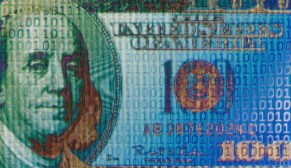As part of its recently released Open Government Plan 2014-2016, the National Archives and Records Administration will upload all of its holdings to the Wikimedia Commons, according to The Signpost, a Wikipedia-hosted publication.
Since 2010, in accordance with President Obama’s Open Government Directive, NARA has set out to make its archives more accessible to the public. “The cornerstone of the work that we do every day is the belief that citizens have the right to see, examine, and learn from the records that document the actions of their Government,” wrote David Ferriero, archivist for the U.S., in the first plan. “But in this digital age, we have the opportunity to work and communicate more efficiently, effectively, and in completely new ways. This will require a change not only in our processes, but also in the culture of the National Archives.”
In the four years since, NARA has made progress on that goal, introducing nearly 100 innovative actions to increase transparency and accessibility. But the administration’s efforts are just beginning to ramp up, according to Ferriero, who wants his agency in the next two years to “become a leader in innovation.”
To help advance that innovation, NARA has started the process of digitizing not just some but all of its holdings.
“Over the next two years we will work to increase the number of National Archives records available on Wikimedia Commons, continue our work to engage local communities of volunteer Wikipedians with on-site events, and collaborate on the development of the GLAM-Wiki U.S. Consortium,” the 2014 report states.
Since 2011, NARA has hosted Wikipedian in Residence Dominic McDevitt-Parks to help with the digitization of holdings. According to the new report, NARA shared 100,000 digital images with Wikimedia Commons in 2012, and in fiscal year 2013, the 4,000 Wikipedia articles featuring its records received more than one billion page views.
And while the report isn’t specific on an end goal for how much of the archives the administration plans to upload, McDevitt-Parks said they’ll digitize anything and everything they can.
“[W]e are not limiting ourselves to particular collections,” he told The Signpost. “Our approach has always been simply to upload as much as possible … to make them as widely accessible to the public as possible.”
That seems like a major task in itself, and it’s just one of NARA’s many other innovative open government projects, such as mobile-optimizing records, developing public APIs for reuse, improving employee engagement and collaboration with digital networks, increasing public engagement through social media, launching an innovation hub powered by presidential innovation fellows and making Archives.gov a more open portal with Drupal. But according to McDevitt-Parks, NARA has many steps in place, like volunteers from Wikipedia to assist with the uploads and an API to easily pull metadata from images, to help facilitate the ambitious endeavor.






